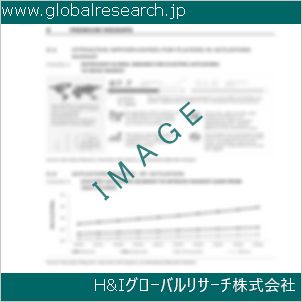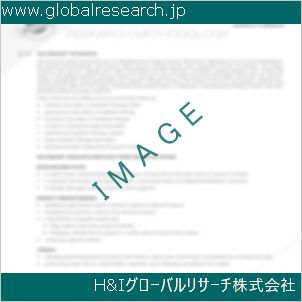Table of Contents
1 Industry Overview of P-Methylstyrene
1.1 Definition and Specifications of P-Methylstyrene
1.1.1 Definition of P-Methylstyrene
1.1.2 Specifications of P-Methylstyrene
1.2 Classification of P-Methylstyrene
1.3 Applications of P-Methylstyrene
1.3.1 Nuclear Application
1.3.2 Non-Nuclear Application
1.4 Industry Chain Structure of P-Methylstyrene
1.5 Industry Overview and Major Regions Status of P-Methylstyrene
1.5.1 Industry Overview of P-Methylstyrene
1.5.2 Global Major Regions Status of P-Methylstyrene
1.6 Industry Policy Analysis of P-Methylstyrene
1.7 Industry News Analysis of P-Methylstyrene
2 Manufacturing Cost Structure Analysis of P-Methylstyrene
2.1 Raw Material Suppliers and Price Analysis of P-Methylstyrene
2.2 Equipment Suppliers and Price Analysis of P-Methylstyrene
2.3 Labor Cost Analysis of P-Methylstyrene
2.4 Other Costs Analysis of P-Methylstyrene
2.5 Manufacturing Cost Structure Analysis of P-Methylstyrene
2.6 Manufacturing Process Analysis of P-Methylstyrene
3 Technical Data and Manufacturing Plants Analysis of P-Methylstyrene
3.1 Capacity and Commercial Production Date of Global P-Methylstyrene Major Manufacturers in 2023
3.2 Manufacturing Plants Distribution of Global P-Methylstyrene Major Manufacturers in 2023
3.3 R&D Status and Technology Source of Global P-Methylstyrene Major Manufacturers in 2023
3.4 Raw Materials Sources Analysis of Global P-Methylstyrene Major Manufacturers in 2023
4 Capacity, Production and Revenue Analysis of P-Methylstyrene by Regions, Types and Manufacturers
4.1 Global Capacity, Production and Revenue of P-Methylstyrene by Regions 2019-2024
4.2 Global and Major Regions Capacity, Production, Revenue and Growth Rate of P-Methylstyrene 2019-2024
4.3 Global Capacity, Production and Revenue of P-Methylstyrene by Types 2019-2024
4.4 Global Capacity, Production and Revenue of P-Methylstyrene by Manufacturers 2019-2024
5 Price, Cost, Gross and Gross Margin Analysis of P-Methylstyrene by Regions, Types and Manufacturers
5.1 Price, Cost, Gross and Gross Margin Analysis of P-Methylstyrene by Regions 2019-2024
5.2 Price, Cost, Gross and Gross Margin Analysis of P-Methylstyrene by Types 2019-2024
5.3 Price, Cost, Gross and Gross Margin Analysis of P-Methylstyrene by Manufacturers 2019-2024
6 Consumption Volume, Consumption Value and Sale Price Analysis of P-Methylstyrene by Regions, Types and Applications
6.1 Global Consumption Volume and Consumption Value of P-Methylstyrene by Regions 2019-2024
6.2 Global and Major Regions Consumption Volume, Consumption Value and Growth Rate of P-Methylstyrene 2019-2024
6.3 Global Consumption Volume and Consumption Value of P-Methylstyrene by Types 2019-2024
6.4 Global Consumption Volume and Consumption Value of P-Methylstyrene by Applications 2019-2024
6.5 Sale Price of P-Methylstyrene by Regions 2019-2024
6.6 Sale Price of P-Methylstyrene by Types 2019-2024
6.7 Sale Price of P-Methylstyrene by Applications 2019-2024
6.8 Market Share Analysis of P-Methylstyrene by Different Sale Price Levels
7 Supply, Import, Export and Consumption Analysis of P-Methylstyrene
7.1 Supply, Consumption and Gap of P-Methylstyrene 2019-2024
7.2 Global Capacity, Production, Price, Cost, Revenue, Supply, Import, Export and Consumption of P-Methylstyrene 2019-2024
7.3 USA Capacity, Production, Price, Cost, Revenue, Supply, Import, Export and Consumption of P-Methylstyrene 2019-2024
7.4 EU Capacity, Production, Price, Cost, Revenue, Supply, Import, Export and Consumption of P-Methylstyrene 2019-2024
7.5 China Capacity, Production, Price, Cost, Revenue, Supply, Import, Export and Consumption of P-Methylstyrene 2019-2024
7.6 Japan Capacity, Production, Price, Cost, Revenue, Supply, Import, Export and Consumption of P-Methylstyrene 2019-2024
8 Major Manufacturers Analysis of P-Methylstyrene
8.1 Manufacturer One
8.1.1 Company Profile
8.1.2 Product Picture and Specifications
8.1.2.1 Type I
8.1.2.2 Type II
8.1.2.3 Type III
8.1.3 Capacity, Production, Price, Cost, Gross and Revenue
8.1.4 Contact Information
8.2 Manufacturer Two
8.2.1 Company Profile
8.2.2 Product Picture and Specifications
8.2.2.1 Type I
8.2.2.2 Type II
8.2.2.3 Type III
8.2.3 Capacity, Production, Price, Cost, Gross and Revenue
8.2.4 Contact Information
8.3 Manufacturer Three
8.3.1 Company Profile
8.3.2 Product Picture and Specifications
8.3.2.1 Type I
8.3.2.2 Type II
8.3.2.3 Type III
8.3.3 Capacity, Production, Price, Cost, Gross and Revenue
8.3.4 Contact Information
8.4 Manufacturer Four
8.4.1 Company Profile
8.4.2 Product Picture and Specifications
8.4.2.1 Type I
8.4.2.2 Type II
8.4.2.3 Type III
8.4.3 Capacity, Production, Price, Cost, Gross and Revenue
8.4.4 Contact Information
8.5 Manufacturer Five
8.5.1 Company Profile
8.5.2 Product Picture and Specifications
8.5.2.1 Type I
8.5.2.2 Type II
8.5.2.3 Type III
8.5.3 Capacity, Production, Price, Cost, Gross and Revenue
8.5.4 Contact Information
…
9 Marketing Trader or Distributor Analysis of P-Methylstyrene
9.1 Marketing Channels Status of P-Methylstyrene
9.2 Traders or Distributors with Contact Information of P-Methylstyrene by Regions
9.3 Ex-work Price, Channel Price and End Buyer Price Analysis of P-Methylstyrene
9.4 Regional Import, Export and Trade Analysis of P-Methylstyrene
10 Industry Chain Analysis of P-Methylstyrene
10.1 Upstream Major Raw Materials Suppliers Analysis of P-Methylstyrene
10.1.1 Major Raw Materials Suppliers with Contact Information Analysis of P-Methylstyrene
10.1.2 Major Raw Materials Suppliers with Supply Volume Analysis of P-Methylstyrene by Regions
10.2 Upstream Major Equipment Suppliers Analysis of P-Methylstyrene
10.2.1 Major Equipment Suppliers with Contact Information Analysis of P-Methylstyrene
10.2.2 Major Equipment Suppliers with Product Pictures Analysis of P-Methylstyrene by Regions
10.3 Downstream Major Consumers Analysis of P-Methylstyrene
10.3.1 Major Consumers with Contact Information Analysis of P-Methylstyrene
10.3.2 Major Consumers with Consumption Volume Analysis of P-Methylstyrene by Regions
10.4 Supply Chain Relationship Analysis of P-Methylstyrene
11 Development Trend of Analysis of P-Methylstyrene
11.1 Capacity, Production and Revenue Forecast of P-Methylstyrene by Regions and Types
11.1.1 Global Capacity, Production and Revenue of P-Methylstyrene by Regions 2024-2029
11.1.2 Global and Major Regions Capacity, Production, Revenue and Growth Rate of P-Methylstyrene 2024-2029
11.1.3 Global Capacity, Production and Revenue of P-Methylstyrene by Types 2024-2029
11.2 Consumption Volume and Consumption Value Forecast of P-Methylstyrene by Regions, Types and Applications
11.2.1 Global Consumption Volume and Consumption Value of P-Methylstyrene by Regions 2024-2029
11.2.2 Global and Major Regions Consumption Volume, Consumption Value and Growth Rate of P-Methylstyrene 2024-2029
11.2.3 Global Consumption Volume and Consumption Value of P-Methylstyrene by Types 2024-2029
11.2.4 Global Consumption Volume and Consumption Value of P-Methylstyrene by Applications 2024-2029
11.3 Supply, Import, Export and Consumption Forecast of P-Methylstyrene
11.3.1 Supply, Consumption and Gap of P-Methylstyrene 2024-2029
11.3.2 Global Capacity, Production, Price, Cost, Revenue, Supply, Import, Export and Consumption of P-Methylstyrene 2024-2029
11.3.3 USA Capacity, Production, Price, Cost, Revenue, Supply, Import, Export and Consumption of P-Methylstyrene 2024-2029
11.3.4 EU Capacity, Production, Price, Cost, Revenue, Supply, Import, Export and Consumption of P-Methylstyrene 2024-2029
11.3.5 China Capacity, Production, Price, Cost, Revenue, Supply, Import, Export and Consumption of P-Methylstyrene 2024-2029
11.3.6 Japan Capacity, Production, Price, Cost, Revenue, Supply, Import, Export and Consumption of P-Methylstyrene 2024-2029
12 New Project Investment Feasibility Analysis of P-Methylstyrene
12.1 New Project SWOT Analysis of P-Methylstyrene
12.2 New Project Investment Feasibility Analysis of P-Methylstyrene
13 Conclusion of the Global P-Methylstyrene (CAS 622-97-9) Industry 2024 Market Research Report
| ※参考情報 p-メチルスチレン(P-Methylstyrene、CAS番号622-97-9)は、有機化合物の一種であり、スチレンの誘導体として知られています。スチレン自身は、主にポリスチレンやその関連材料の原料として用いられる重要なモノマーですが、p-メチルスチレンはその分子構造にメチル基(-CH₃)がパラ位に位置することによって、いくつかの特異な性質を示します。 この化合物は、分子式C₉H₁₀を持ち、化学構造としてはベンゼン環にエチレン様の二重結合が結合している構造を持っています。メチル基は、その立体的配座から、物性や反応性に影響を及ぼします。特に、メチル基の存在はバルク性を向上させ、化合物の親水性や疎水性の特性に変化をもたらします。 p-メチルスチレンの特徴の一つとして、その高い耐熱性や化学的安定性が挙げられます。さらに、他のスチレン誘導体と同様に、重合反応を通じてポリマーを形成する能力があり、その結果として得られるポリマーは工業的に重要です。また、濃厚な甘い香りを持つため、香料としての利用も考えられます。 この化合物は、ポリマー合成の際に使用される基礎材料や添加剤としての役割を果たすことがあります。具体的には、p-メチルスチレンは、エポキシ樹脂やポリウレタン、合成ゴムなどの製造において、改良された性能を得るための共重合モノマーとして広く利用されています。特に、ポリマーの柔軟性や耐摩耗性を向上させる目的で使われることが多いです。 さらに、医療分野でもその応用が期待されています。具体的には、ドラッグデリバリーシステムやバイオマテリアルの研究において、p-メチルスチレンとして合成されたポリマーが使用されることがあります。これにより、薬剤の放出速度を制御することや、生体適合性の特性を強化することが可能になります。 また、環境への配慮から、リサイクル可能な材料や生分解性材料の研究が進められており、p-メチルスチレンを含むポリマーもその対象となっています。これにより、持続可能な材料開発の一環として、化石燃料由来の原料からの依存度を減少させることが期待されます。 関連技術の面では、化学合成プロセスの改善や、新たな重合手法の開発が行われています。これにより、より高効率かつ低コストでの製造が可能となっています。また、触媒技術の進展により、反応条件の改善や高分子の特性の最適化が図られています。このような技術革新は、p-メチルスチレンがもたらす潜在的な利点を最大限に引き出す鍵となるでしょう。 最後に、p-メチルスチレンはその独特の化学的特性と適用範囲の広さから、さまざまな産業分野での利用が見込まれています。材料科学、化学工業、さらには医療分野における応用が進むことで、この化合物の重要性は今後も高まると考えられています。新たな研究や技術革新を通じて、その可能性はさらに拡大し続けるでしょう。持続可能な社会に向けた取り組みの中で、p-メチルスチレンの利用が一層推進されることが期待されます。 |
❖ 免責事項 ❖
http://www.globalresearch.jp/disclaimer












